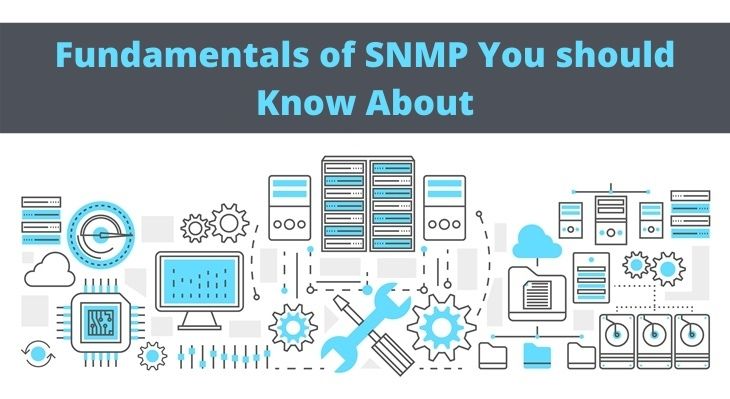SNMP (Simple Network Management Protocol) is a relatively simple protocol. However, all of its functionalities are powerful enough to allow the management of complex heterogeneous networks.
In order to use this protocol, it’s important to know the basics or fundamentals of SNMP.
SNMP provides a scheme for collecting, organizing, and communicating, management information between the devices that make up a network.
In this article, we’ll discover the fundamentals of SNMP, what it is and how its architecture works.
SNMP is a transmission protocol that allows network administrators to maintain network equipment, diagnose and monitor network and hardware problems remotely.
Network management through SNMP allows simple and easy monitoring of the status, of the network in real-time and can be used to manage different types of systems.
It can communicate with almost any manageable network asset. This is how SNMP makes it possible to unify and standardize the management and monitoring of the network. This moreover, helps simplifying the activity and gaining agility.
With SNMP, administrators can manage and configure network elements from a centrally located server instead of having to run network management software.
In addition to polling and exchanging information, SNMP sends data packets without explicit requests. You can preconfigure these SNMP traps to notify clients of specific changes on the device.
The operation of SNMP is based on two devices, the agent and the manager. Each managed machine is seen as a set of variables that represent information regarding its current state. This information is available to the manager through consultation and can be changed by him.
The manager is the console that enables the network administrator to execute management requests.
The manager sends a command to the agent, which accesses the actual message from the network’s hardware device. The message can then be examined and appropriately routed according to predefined rules.
Agents are modules that dwell in network elements. They will look for management data such as the quantity of packets received or forwarded.
The SNMP agent is available for almost all types of equipment, there is no need to install, just enable it on the device, which makes it less intrusive.
One of the fundamental elements of SNMP is the Management Information Base (MIB). It can be defined as a database of objects managed by agents, where managers can obtain the status or data.
It contains data organized hierarchically, collected from a particular device. The MIB is involved in all SNMP devices. It is converted, by the protocol, into a format that the monitoring software can use.
- GET: Function used to access a specific variable in the MIB of the network asset.
- GET NEXT: This function is used to access values in sequence in the equipment’s MIB. It is useful when looking for various values in the MIB.
- GET BULK: This function makes it possible to access large blocks of data more efficiently.
- SET: Function used to change values in the MIB of the network asset.
- TRAPS: A function that allows the agent to notify the manager when a certain event occurs, and may or may not generate an action for the purpose of recovering or correcting something.
- INFORM: It is a function that allows the existence of more than one manager.
- RESPONSE: This function receives responses from agents to a manager by returning variables.
Also Discover: Benefits of SNMP
SNMP works with an agent and manager pattern, where the agent is responsible for collecting data and sending information to the manager, in addition to sending alerts, called traps.
The manager, in turn, receives the data from the agents and interprets and analyzes them, in addition to asking the agents for the desired information.
Although the SNMP is the name of the solution, it does not act alone. The protocol is responsible for the communication between the agent and manager. We use MIB and OID for monitoring to happen.
You may also like to read: What is the Importance of SNMP?

